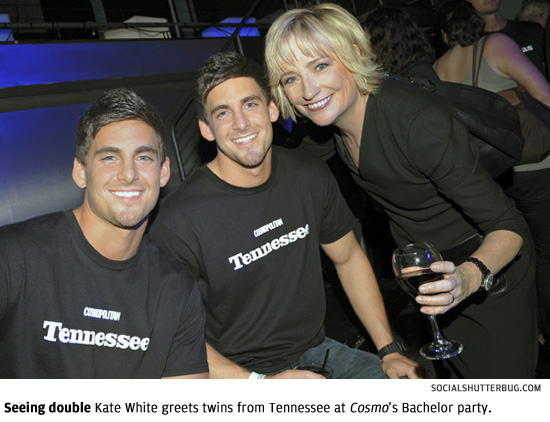
It takes guts to quit a job running the world’s best-selling women’s magazine. But Kate White has long embodied the “fun fearless female” ethos of Cosmopolitan, which she edited for the past 14 years. White resigned in September, shortly after The New York Times noted that the 100 million readers of the brand’s 64 editions, confederated, would add up to the world’s 12th-largest country. A master of the irresistible headline, White has published six Bailey Weggins mystery novels and already has a new book out (I Shouldn’t Be Telling You This: Success Secrets Every Gutsy Girl Should Know). CJR’s Cyndi Stivers emailed with White in October.
Why did you decide to leave?
I loved my time at Cosmo, but I started to feel restless, even a little grouchy at times—which I rarely am at work—and it was a sign I was ready for a fresh adventure. And I had the chance to leave at a point when Cosmo was No. 1 and was in good shape for the future. Plus, I really believe there are windows in our careers, and you have to be willing to leap at a certain time or it might be too late. I knew that if I wanted to have another career, I’d have to do it now.
What milestones are you proudest of?
I took a mature brand and helped reinvent it successfully for a new century. We outsold our nearest competitor, Glamour, by over a million copies each month on the newsstand. I’m also really proud of the Practice Safe Sun Campaign we started in 2006 [to publicize] that melanoma was the fastest growing cancer for women in their twenties. I love that 54 percent of readers said they changed their sun-related behavior because of our campaign.
What’s your favorite Cosmo coverline ever? And how about your best display-type double entendre?
So hard to choose. I love so many of them. Favorite double entendre? Maybe “How to Deal with an Iffy Stiffy.” We found that the articles that got the best traffic on Cosmo’s website had titles similar to the highest-rated titles and coverlines for the magazine. The key is to figure out the reader need you want to tap into. The more important need, the better the coverline will be. And try build the line around where the universal intersects with the specific. Examples: “Why Men Cheat in August,” “The Sex Article You Must Read With Your Boyfriend,” and “How to Lose Weight While You Eat.”
In what position of your career did you learn the most
I learned the most running Cosmo. When I saw that the stakes were so high, I realized I had to both lead and learn.
Can you talk about the ’70s, working with Art Cooper at Family Weekly [a Sunday newspaper supplement]? Wasn’t David Granger there too?
Art was such a smart and charismatic boss. Eliot Kaplan worked with me there, right out of journalism school. He went on to edit Philadelphia magazine and is now the talent hunter at Hearst. Ellen Kunes, the editor of Health, worked with us, too. Dave Granger, editor of Esquire, came after Art left. The bottom line: Sometimes at a small, less-than-glamorous place you get the chance to do far more than you would at a big place.
Describe your new daily routine.
It’s still a work in progress, but I love being more of an entrepreneur. It’s something I always dreamed of. My days right now are a mix of speeches, book promotion, writing, projects, and spending far more time with my husband. We bought a home in Uruguay a few years ago, and we plan to spend five weeks there this winter, working remotely.
What’s the best advice you’ve picked up along the way?
A great piece of advice came from the fantastic journalist Ron Rosenbaum, who, funnily enough, had [credited it to Cosmo foremother] Helen Gurley Brown. It’s called the pregnant pause: When someone tells you something, don’t rush to fill the vacuum. Say nothing. Do not pounce. Let them fill the vacuum. And they will often say the most amazing thing they hadn’t intended to say.
Cyndi Stivers is a former editor in chief of CJR
